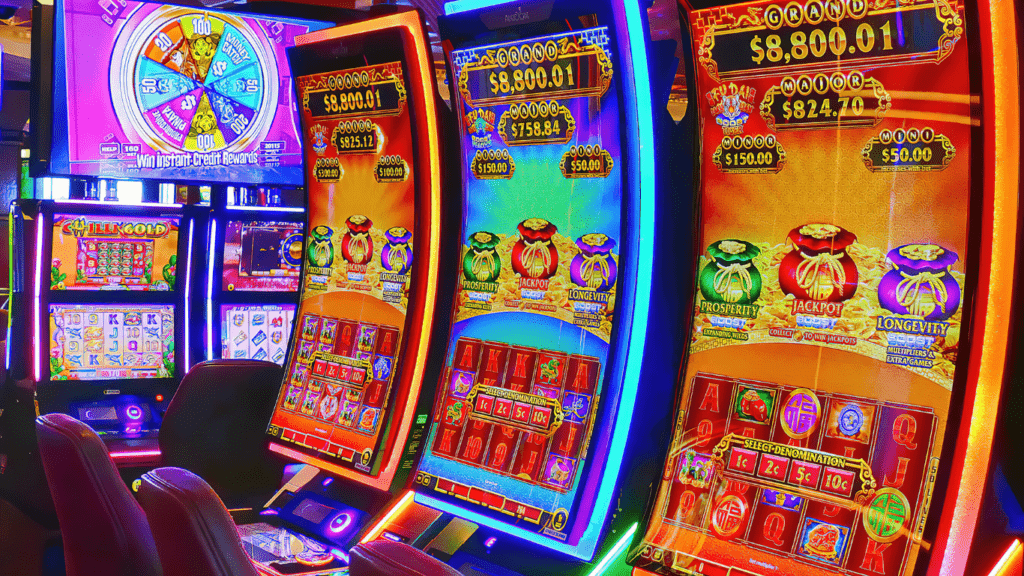Slot machines might look like games of pure luck, but there’s more to them than meets the eye. I’ve learned that understanding slot stats can make a big difference in how you approach the game. Knowing what to look for doesn’t just add to the fun—it can help you make smarter decisions and stretch your bankroll further.
Understanding Slot Statistics
Slot statistics provide critical insights into how a game operates and what players can expect. By analyzing these stats, I can make well-informed decisions and manage my bankroll more effectively.
What Are Slot Stats?
Slot stats are numerical data explaining specific aspects of how slot machines function. Key statistics include the Return to Player (RTP) percentage, volatility level, and hit frequency.
- Return to Player (RTP): Indicates the percentage of wagered money a slot is programmed to return over time. For example, a 96% RTP means the game pays back $96 for every $100 wagered on average.
- Volatility: Measures the risk level of a slot. High-volatility slots offer larger but less frequent payouts, while low-volatility slots provide smaller, more regular wins.
- Hit Frequency: Reflects how often a winning combination occurs. If a slot has a 20% hit frequency, I can expect one in five spins to result in a win.
Why Slot Stats Matter in Decision-Making
Understanding slot stats helps me align my goals with my gameplay.
- Maximizing RTP: I can focus on games with higher RTP percentages to increase returns over extended play sessions.
- Selecting Volatility: If I want steady wins to prolong my bankroll, I’d choose low-volatility slots. For bigger, riskier payouts, high-volatility games are better.
- Budgeting Based on Hit Frequency: Games with low hit frequencies require higher budgets due to fewer regular wins, while frequent-winning slots allow longer gameplay on smaller budgets.
By knowing these stats, I can play strategically rather than relying solely on luck.
Key Slot Statistics to Monitor

Understanding critical slot machine statistics can improve decision-making and create a more enjoyable and strategic gaming experience. By focusing on these metrics, players can align slot choices with their objectives.
RTP (Return to Player)
RTP represents the percentage of total wagered money a slot machine is programmed to return to players over time. A slot with an RTP of 96% will statistically return $96 for every $100 wagered, though this is calculated over millions of spins. Higher RTP slots, such as Starburst or Blood Suckers, offer better chances of long-term returns. I always recommend checking a game’s RTP before starting to ensure it aligns with your gameplay goals.
Volatility and Variance
Volatility, sometimes called variance, measures the risk and win patterns of a slot machine. High-volatility slots like Book of Dead feature large but less frequent payouts, making them better suited for players with larger bankrolls. Low-volatility slots like Starburst, on the other hand, provide smaller but more frequent wins, making them ideal for extended play sessions and modest budgets. Understanding volatility helps me choose games that match my bankroll and risk tolerance.
Paylines and Winning Combinations
Paylines determine how winning combinations form on a slot’s reels. Games like Gonzo’s Quest may have fixed paylines or adjustable options, while Megaways slots can feature thousands of win ways due to dynamic reel setups. I consider how many paylines a slot offers and the cost of activating them to find a balance between maximizing winning chances and managing my wager per spin.
Analyzing Slot Stats for Improved Strategy
Mastering slot stats empowers informed decisions and enhances gameplay. Each metric plays a crucial role in crafting an effective approach.
Identifying Optimal RTP
High-RTP slots offer better long-term returns. I prioritize games with RTPs above 96%, as these statistically provide more back per dollar wagered over time. Online casinos typically list RTPs, allowing easy comparisons before committing funds. For casual sessions, I might explore mid-tier games with 94-95% RTPs to balance entertainment value.
Balancing Volatility with Your Goals
Slot volatility influences risk and reward. I choose low-volatility games for longer sessions with consistent but modest payouts. If I’m chasing larger wins, I shift to high-volatility slots, accepting fewer payouts but greater potential rewards. Mid-volatility options suit mixed goals, offering decent win frequencies and reasonable payout sizes.
Leveraging Bonus Features and Multipliers
Bonus features enhance value and extend gameplay. I look for games with:
- free spins
- expanding wilds
- progressive jackpots
to unlock extra potential. Multipliers can significantly boost wins, especially during free rounds. Understanding feature triggers helps me plan stakes, ensuring I maximize chances for bonus-based benefits.
Common Misconceptions About Slot Stats
Misinterpretations of slot stats can lead to unrealistic expectations and poor decision-making. Avoiding these common misconceptions helps in developing a better understanding of how slot machines function.
The Myth of “Hot” and “Cold” Machines
Many players believe that machines experience “hot” streaks of frequent payouts or “cold” spells with no wins. Slot machine outcomes rely on Random Number Generators (RNGs), ensuring every spin is independent. A winning spin doesn’t increase or decrease the likelihood of another win. For example, just because a machine recently paid out, it doesn’t mean it’s less likely to produce another win soon after.
Misunderstanding Odds Versus Outcomes
Some assume that knowing a slot’s odds guarantees specific results. Odds represent probabilities over thousands or millions of spins. This means a slot machine with a 96% RTP doesn’t ensure a player will win back $96 after spending $100 in a single session. Instead, it indicates long-term performance. Outcomes, determined by RNGs, remain unpredictable within a short time frame. For instance, two spins on the same machine can yield completely different results regardless of reported odds.




